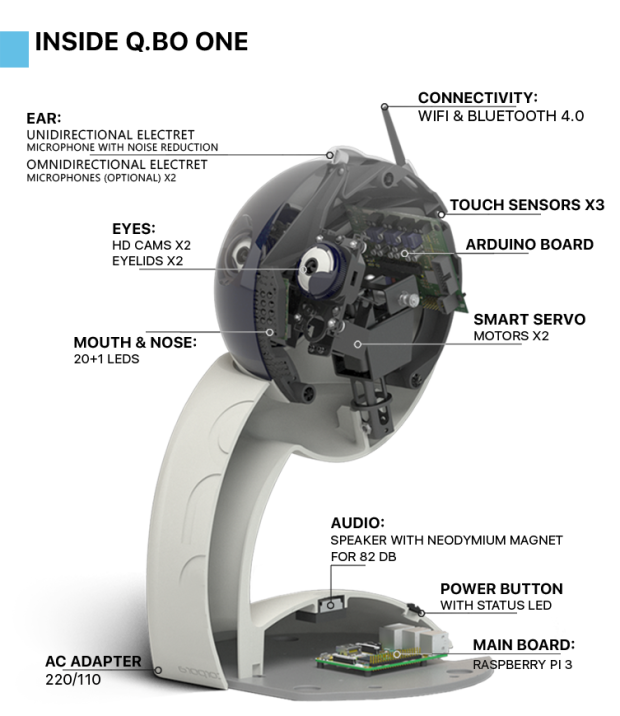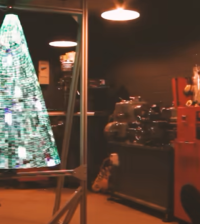- makeITcircular 2024 content launched – Part of Maker Faire Rome 2024Posted 2 weeks ago
- Application For Maker Faire Rome 2024: Deadline June 20thPosted 2 months ago
- Building a 3D Digital Clock with ArduinoPosted 7 months ago
- Creating a controller for Minecraft with realistic body movements using ArduinoPosted 7 months ago
- Snowflake with ArduinoPosted 8 months ago
- Holographic Christmas TreePosted 8 months ago
- Segstick: Build Your Own Self-Balancing Vehicle in Just 2 Days with ArduinoPosted 8 months ago
- ZSWatch: An Open-Source Smartwatch Project Based on the Zephyr Operating SystemPosted 9 months ago
- What is IoT and which devices to usePosted 9 months ago
- Maker Faire Rome Unveils Thrilling “Padel Smash Future” Pavilion for Sports EnthusiastsPosted 10 months ago
Q.bo One is the Open Source Robot Kit Based on Raspberry Pi and Arduino

A new type of consumer-tier robot has launched, and it is called Q.bo One. This model, unlike ones before it, is open source and designed for anyone to build. The robot utilizes a simple programming language called Scratch, while the hardware itself is based around Raspberry Pi and Arduino.
Q.bo One is targeted at both consumers and developers, and as such promises a mixture of simplicity and usability thanks to its Raspberry Pi innards and Scratch language.
The Qboard (also referred to as the Q.board) runs Arduino code on an Atmel ATSAMD21 MCU, and houses the three microphones, speaker, touch sensors, Dynamixel controller, and the LED matrix for the mouth. Other features include GPIO, an I2C interface, and a micro-USB port that can connect to a desktop computer.
Scratch is a programming language suitable for kids, one that relies heavily on reasoning and creativity. Code is assembled using pieces that essentially build onto each other like puzzle pieces — if you’ve ever used Google’s coding lessons for kids, you’ll have a good idea of what to expect.
Q.bo One itself is said to feature a pair of digital servos for moving around, as well as two cameras that function as eyes, a trio of microphones for listening, a speaker enabling it to respond, and a bunch of LEDs to form a mouth. A three-part capacitive sensor on the robot’s head enables it to feel and react to touch from its humans. An artificial intelligence system enables Q.bo to interact with humans, and to also maintain ‘ambient awareness’ for learning from its environment.
The model has launched on the crowdfunding website Indiegogo, where the team behind hopes to raise enough funds to bring the robot to life.















